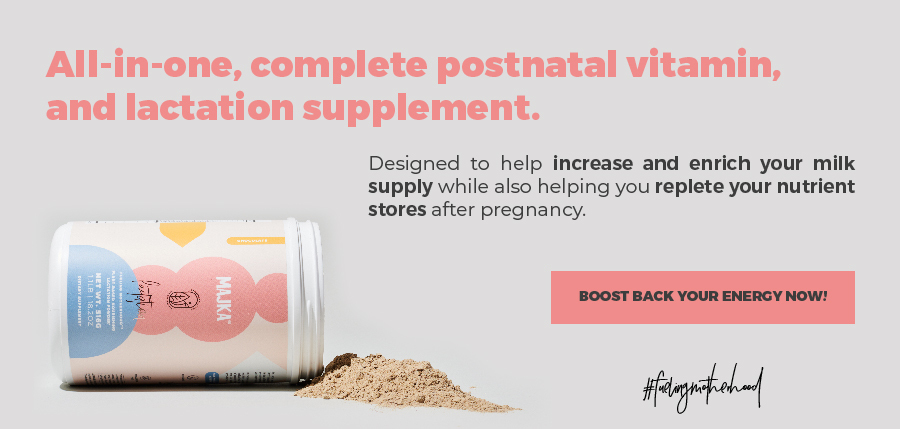
Breastfeeding comes with a variety of questions for new moms, and maybe you have wondered at some point if there is such thing as too much breast milk. Although your milk supply naturally adjusts to your baby’s needs normally, breast milk oversupply is a problem that many moms face at some point, especially during the first weeks when their body is still adapting to the feeding rhythm of their newborn; contrary to low supply, breast milk oversupply is a phenomenon a lot of moms are not aware they might face.
Breast milk oversupply – also known as hyperlactation – occurs when the amount of milk a mother is generating overtakes the demand of their baby, which can be caused by many reasons, and while this may sound like a “good problem” to have, this experience can be uncomfortable both for you and your baby.
As it is not that simple to measure how much milk you are producing when directly breastfeeding, the best way to determine if you have breast milk oversupply is by tracking how you and your baby feel, so let’s discuss how to detect it and what you can do about it:
Causes of breast milk oversupply
During the first 4 weeks after your baby is born, breast milk oversupply is completely normal and can happen spontaneously, but if this condition continues after this period, it could be due to mismanaged feeding patterns like:
- Feeding your baby mainly from one breast.
- Pumping too much before or after breastfeeding–including silicone pumps.
- Breastfeeding on a schedule rather than when your baby needs to.
Also consider that hyperlactation can be caused by other reasons, which include:
- Hyperthyroidism and other genetic predispositions
- Excess of prolactin (hyperprolactinemia)
- Medications that increase milk production
- Overuse of galactagogues
Signs to look for
To know if you are dealing with breast milk oversupply, there are important signs that you will start noticing in your body, such as:
- Your breasts are rarely soft or they feel uncomfortable
- Forceful or painful let-down reflex
- Profuse leaking
- Sore nipples
- Not feeling your breasts softer after a feeding
- Ability to pump plenty of milk after an efficient feeding
How does it affect you?
When not diagnosed and managed properly, breast milk oversupply can cause some difficulties. Hyperlactation might leave you feeling like your breasts are refilling very quickly after breastfeeding your baby, or you may feel like you are unable to drain your breasts fully, with a lumpy and tight sensation after breastfeeding. Also, there’s the possibility that your breasts might leak more than usual, making breastfeeding a less pleasurable experience.
Other disadvantages you can experience due to oversupply are:
How does it affect your baby?
Oversupply can affect your baby’s experience too; they might show fussiness during and after feedings, making it difficult to identify if the problem is that they are still hungry or getting big amounts of milk too fast. Some other symptoms that your little one might develop if struggling with breast milk supply are:
- Choking, coughing, or spluttering at the breast
- Difficulty latching or having a poor latch
- Gassiness
- Colic
- Large, green, and frothy stools
- A bigger volume of wet nappies
- Greater than regular weight gain
- Milk protein allergy
Slowing down your milk production
Luckily, taking action to reduce your milk supply is easy, and little by little you will start noticing changes. These are some simple solutions we share with you to make breastfeeding more comfortable and lower the amount of milk you generate, but before trying any of these, consult with your health care provider to ensure you are dealing with hyperlactation:
- Laid-back breastfeeding: Try reclined positions or lie down to give your baby more control over the flow they consume. Don’t forget to place a towel underneath you to avoid spilling milk.
- Stop expressing milk: Remember the more milk you give, the more your body generates. One thing you can do to relieve your breasts is to express just a little bit just before feeding your baby, in order to relieve some pressure and give them more control over the flow.
- Avoid lactation supplements: Sometimes having lactation cookies or other supplements can be part of the problem. You could even try herbal preparations with sage, parsley or peppermint to lower your supply; but do so with the advice of your lactation consultant or a health expert.
- Block feeding: This is when you offer one breast mainly to your baby. Although block feeding is an effective way to reduce your supply, changes have a quick and important impact, so consult with an expert to see the best way to practice this.
With the passing of weeks, hyperlactation will stop being a problem, so don’t worry about dealing with this during the whole breastfeeding process; overcoming this comes with patience and the help of your family doctor is going to be key. To deepen into everything around lactation, follow our content at Breastfeeding 101, and don’t miss any articles, as we guide you through this wonderful journey.
If you want to know more about breast milk oversupply causes, symptoms, and solutions; you can dig into the sources that we used to make this article by clicking them here:
Oversupply | La Leche League International
Too much breast milk? How to reduce oversupply | Medela
Oversupply of breast milk and how to reduce it | NCT
Oversupply of breastmilk | Pregnancy Birth & Baby
Too Much Milk and Oversupply | La Leche League GB
Breast Milk Oversupply | Cincinnati Children’s
Annie Rueb






